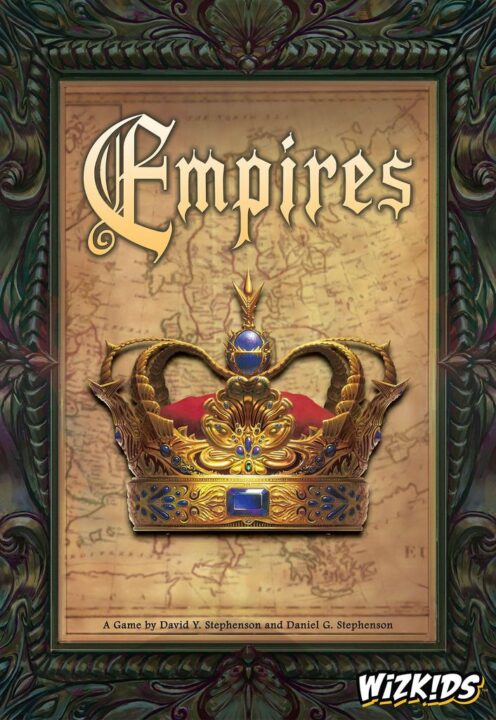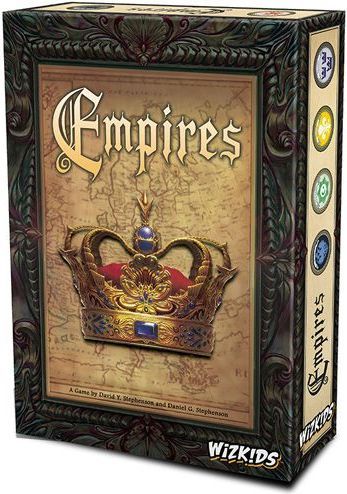Hey there, fellow board game enthusiasts! Buckle up as I review the intricate world of Empires. This game promises grand strategy and epic battles, but does it deliver? Let’s find out!
How It Plays
Setting Up
First, lay out the board and divide the empire tokens among the players. Each player gets a set of structures and starting resources. Place your empire markers on the starting regions. Shuffle the deck of event cards and place it within reach of all players. Finally, decide the first player using your preferred method. I usually go with the classic ‘who last ate pizza’ rule.
Gameplay
The game progresses in turns, each with multiple phases. In the income phase, collect resources based on controlled regions. During the action phase, players can build structures, trade with others, or wage epic battles. Decision-making is crucial here! Event cards drawn at the end of each turn can shake things up, sometimes for better, sometimes for worse. Keep an eye on your opponents’ moves and adjust your strategies accordingly.
Winning the Game
The game ends when a pre-set number of rounds are completed or when a player reaches a victory point threshold. Points are tallied based on controlled regions, successful trades, and completed objectives. Most points win, obviously. In our last game, my friend Dave walked away with the win, leaving us all plotting our revenge for next time!
Want to know more? Read our extensive strategy guide for Empires.
Gameplay Mechanics and Balance in ‘Empires’
Let’s talk about the nuts and bolts of ‘Empires’. You want a game that feels fair, right? Well, I got good news and bad news. The good news is, ‘Empires’ has some fantastic mechanics. The bad news? Sometimes, the balance can feel a bit wobbly.
‘Empires’ is all about building your civilization from the ground up. Each player gets to control their own unique empire, complete with its own strengths and weaknesses. Sounds cool, right? It is! Until your friend’s ‘Agriculture’ deck completely outgrows your ‘Technology’ deck. One game, my buddy Tony had his farms cranking out resources like there was no tomorrow, while I was stuck trying to invent the wheel.
The mechanics are straightforward: you collect resources, build structures, and expand your empire. The action cards add a nice twist, allowing for some strategic depth. But here’s where the balance wavers – certain strategies seem much stronger than others. If you’re lucky enough to draw the right cards, you can steamroll your friends. If not, well, good luck catching up!
Don’t get me wrong, the game is still a blast. The strategy element keeps you engaged, and there’s a real sense of accomplishment when you build a powerful empire. Just be prepared for a few balancing quirks along the way. And if you’re a stickler for fairness, this might bug you.
Next up, we’ll chat about how ‘Empires’ handles player interaction and engagement. Spoiler: there are some epic moments of betrayal to discuss!

Player Interaction and Engagement in ‘Empires’
When it comes to player interaction, ‘Empires’ absolutely shines. The game’s design ensures you’re always aware of what your friends are doing. You can’t just sit back and watch—you need to strategize against real people, not just a static board.
One of the best parts is the trading phase. Picture this: you’re down to your last few resources and need to make a deal. You look at your friend, knowing they have what you need but will they trade with you? Negotiations can become as intense as a family game of Monopoly during the holidays!
Blocking, alliances, and sneaky moves keep everyone on their toes. You might form a temporary alliance with a friend to take down a common enemy, only to betray them a few turns later. It’s all in good fun, of course, but you might want to watch your back next game night.
However, sometimes the level of engagement can dip if one player pulls ahead too early. The rest of the players might feel a bit like they’re just along for the ride. While it’s thrilling when you’re in the lead, the game could benefit from mechanisms to keep everyone engaged till the end.
So, if you’re looking for a game to engage everyone around the table and bring out their best (and worst) traits, ‘Empires’ is a solid choice. Just be ready for some friendly betrayal and intense discussions!
Next up, let’s chat about the quality of the components and the artwork. Buckle up, it’s going to be colorful!

Component Quality and Artwork in Empires
When you open up the box of Empires, the first thing that hits you is the sheer quality of the components. We’re talking about sturdy player boards, thick cardstock for the various tokens, and dice that feel like they could survive a tumble off a skyscraper. Trust me, my friend Steve knocked one off the table and it didn’t even chip. If you’re someone who gets a kick out of tactile experiences, you’ll love what Empires has to offer.
And the artwork? Oh boy, let’s talk about that. The game’s artwork is nothing short of spectacular. The detail on the cards is so fine, you’ll be tempted to whip out a magnifying glass. The illustrations are thematic and fit perfectly with the historical settings. Even little stuff, like the iconography, is well thought out and enhances the overall experience. You can clearly tell that a lot of love went into the visual design of Empires.
However, it’s not all sunshine and roses. One minor gripe I have is with the color palette used for some of the components. During one of our late-night game sessions (with maybe one too many pizzas), we found that some colors look annoyingly similar under poor lighting. It’s a minor drawback, but it’s there, especially for those prone to color confusion.
Overall, the quality of components and artwork in Empires sets a high bar. It’s evident that the creators wanted the game to be as visually appealing as it is fun to play. Next, let’s dive into the replayability and game length—two crucial factors that’ll make or break your game nights.
Replayability and Game Length in Empires
When talking about board games, replayability often comes up. Empires does an excellent job here. The various strategies and pathways to victory mean you won’t see the same game twice. One time, my friend Dave tried a heavy military approach. He ended up ruling with an iron fist. The next game, he went the economic route and still managed to beat us. The diversity of strategies keeps players coming back for more.
Now, let’s chat about game length. Some folks can spend hours on a game, some prefer quicker matches. Empires falls somewhere in between. Playtime can range from 1 to 2 hours depending on the number of players and how quickly decisions are made. My buddy Sam is notorious for dragging out his turns. When he’s at the table, it’s definitely a 2-hour game. But with a focused group, it can wrap up quicker.
Let’s get real: commitment matters. Empires is not a game to pull out for a quickie session. If you’ve got an evening to spare and a group that loves depth and strategy, it’s a perfect match. Just make sure you clear your schedule a bit.
So, do I recommend Empires? Absolutely! If you’re into a game that’s strategic, offers rich replayability, and don’t mind settling in for a couple of hours, this one’s for you. Just keep an eye on Dave and his sneaky tactics.
Conclusion
So, we’ve reached the end of this epic Empires journey. This game shines with its strategic depth and beautiful components. Player interaction is top class, but balance can be shaky. If you’re into strategy and have some time to commit, give Empires a spin. Just remember, a bit of strategy over here and a little alliance over there, and you might just rule the world… or at least the table! Happy gaming!

